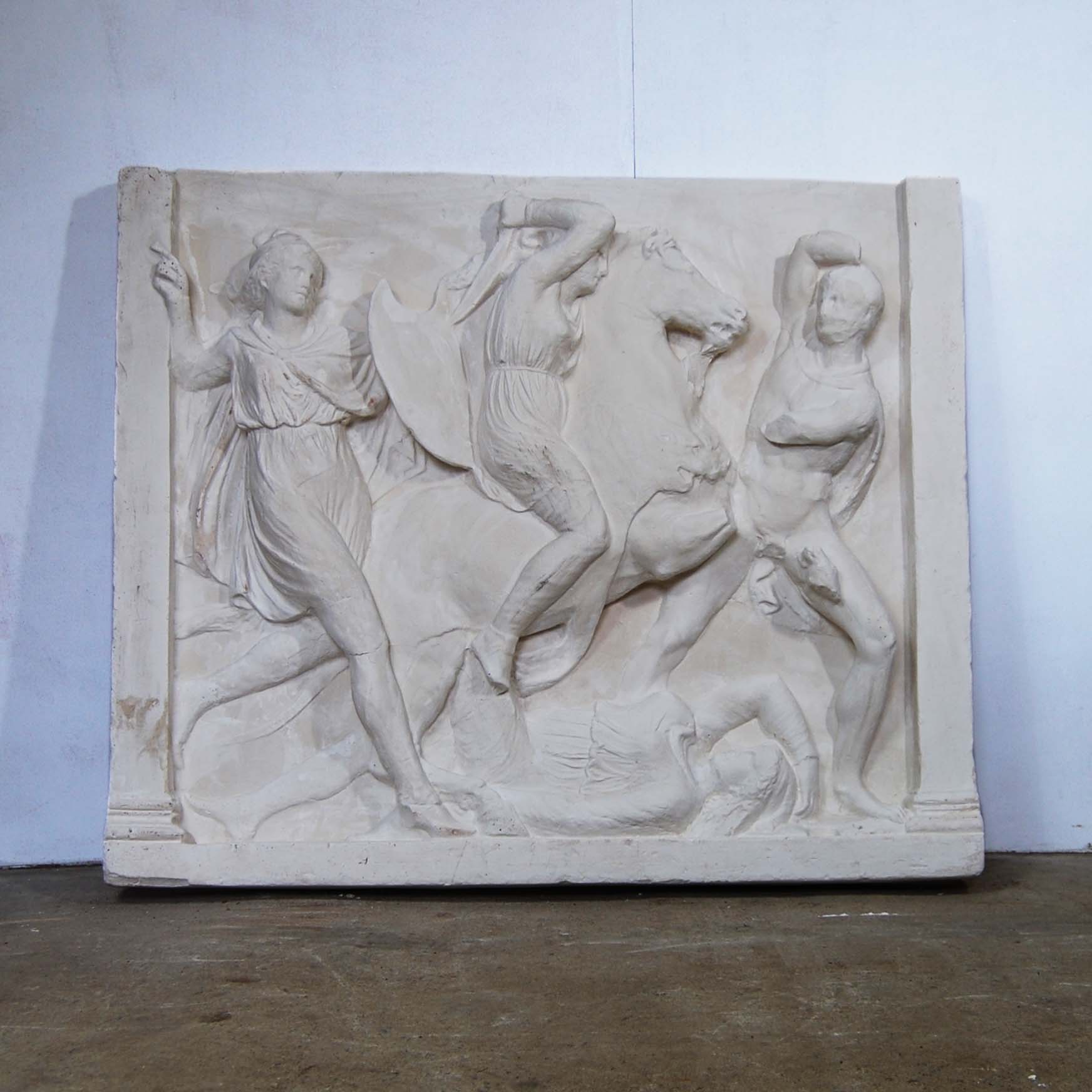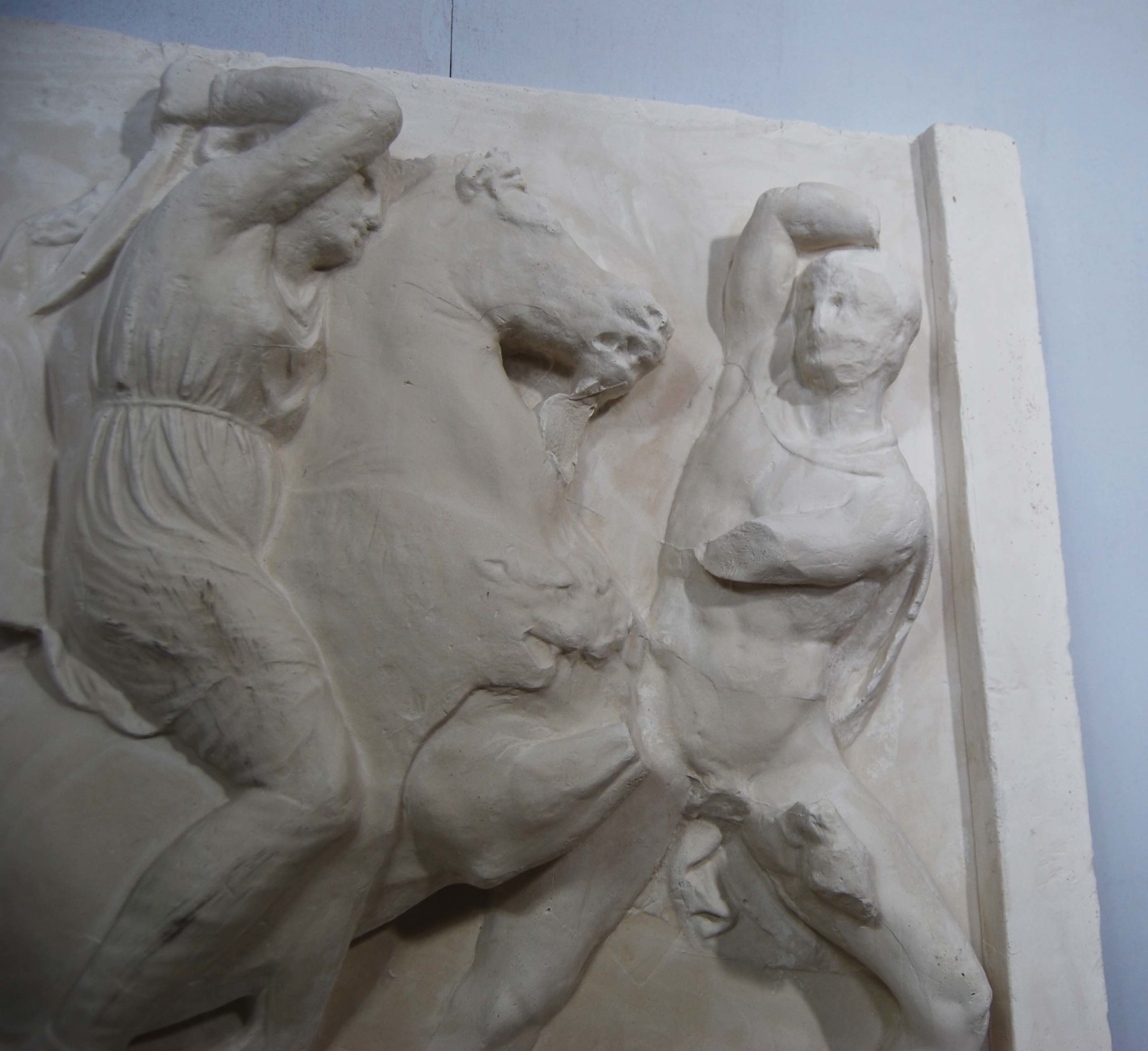Click and Collect – Please contact us to arrange collection or delivery of this item
Amazonamachy: A Classical plaster figural relief
the central mounted Amazon in readiness to strike a Greek warrior, another Amazon in support, a further prone beneath the rearing stead. A companion piece to our cast 44365- a frieze from the long side of the same sarcophagus,
£700
The original Roman marble sarcophagus, dating from 330-310BC, from which this cast is taken, was excavated in 1557 in the ancient royal city of Soloi, Cyprus. It was taken the following year to Venice. In 1567 it was acquired by the Fugger family and then in the 1st half of the 17th century purchased by the Hapsburgs. The unknown incumbent was probably related to the Soloi dynasty and the much-used allegory of the Amazonachy on their sarcophagus could well point to Stasicrates, who took part in the campaign of Alexander the Great at Tyre in 332 BC.
Amazonomachy represents the Greek ideal of civilization. The Amazons were portrayed as a savage and barbaric race, while the Greeks were portrayed as a civilized race of human progress. According to Bruno Snell’s view of Amazonomachy:
“For the Greeks, the Titanomachy and the battle against the giants remained symbols of the victory which their own world had won over a strange universe; along with the battles against the Amazons and Centaurs they continue to signalize the Greek conquest of everything barbarous, of all monstrosity and grossness.”
Amazonomachy is also seen as the rise of feminism in Greek culture. In Quintus Smyrnaeus’s The Fall of Troy, Penthesilea, an Amazonian queen, who joined on the side of the Trojans during the Trojan war, was quoted at Troy, saying:
Not in strength are we inferior to men; the same our eyes, our limbs the same; one common light we see, one air we breathe; nor different is the food we eat. What then denied to us hath heaven on man bestowed?
According to Josine Blok, Amazonachy provides two different contexts in defining a Greek hero. Either the Amazons are one of the disasters from which the hero rids the country after his victory over a monster; or they are an expression of the underlying Attis motif, in which the hero shuns human sexuality in marriage and procreation.
“In the 5th century, the Achaemenid Empire of Persia began a series of invasions against Ancient Greece. Because of this, some scholars believe that on most 5th-century Greek art, the Persians were shown allegorically, through the figure of centaurs and Amazons.”
The west metopes of the Parthenon depict a battle between Greeks and Amazons. Despite its mutilated state, scholars generally concur that the scene represents the Amazon invasion of Attica. The Bassae Frieze in the Temple of Apollo has different types of Amazonomachy depicted – Trojan/ Heraclean etc. – as does the Mausoleum at Halicarnassus. (Source: Wiki)
Cast from a mould made by our Resident Master Plaster Caster: Peter Hone.




